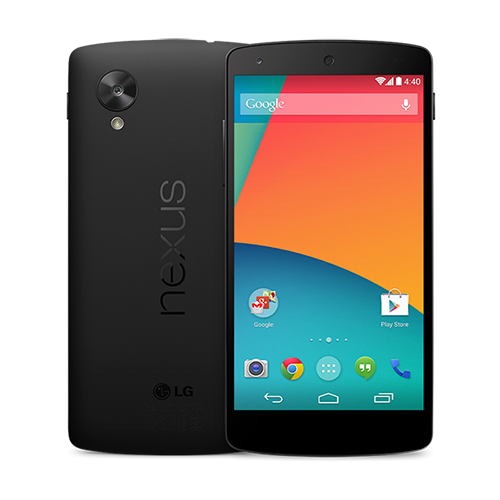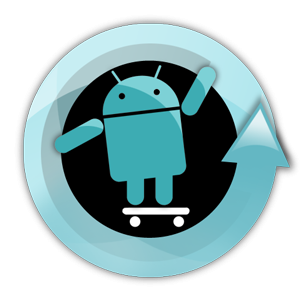It was another strong and, may I say, dominant year for the Android platform. It continued to dominate in market share and climb in numbers. Countless devices were released featuring the popular, mobile operating system and not all of those devices were smartphones or tablets. Android is making headway in new territories. 2013 was a busy year for the green robot. Now that the year has come to a close, it's time to recap the action.
Market Share
Android's market share in 2013 was impressive. Google reported that there'd been over 900,000 activations and IDC (International Data Corporation) data showed that four out of five phones shipped with the Android operating system on it. There was good news on the Google Play front as well. Google Play is accounting for 75% of all app downloads.
Unfortunately, market share doesn't equal profit. In 2013, Apple's App Store generated over $10 billion with December accounting for $1 billion.
From a developer's perspective, these numbers are encouraging and the same is true for Google Play. However, it remains a fact that Android users spend less money on applications than iOS users. Apple's mobile platform remains more profitable than Google's.
API distribution
In 2013, Android made good progress addressing the operating system's problematic fragmentation. Android versions below 2.2 have virtually disappeared with 2.2 (Froyo) and 3.2 (Honeycomb) following suit.
As of January 2014, more than 50% of Android devices are running a flavor of Jelly Bean, while 2.3 (Gingerbread) and 4.0 (Ice cream sandwich) declined considerable in 2013. This is a good sign, though, as it indicates that attempts to reduce Android's fragmentation are heading the right direction.
| December 2012 | |||
| Version | Codename | API | Distribution |
| 1.5 | Cupcake | 3 | 0.1% |
| 1.6 | Donut | 4 | 0.3% |
| 2.1 | Eclaire | 7 | 2.7% |
| 2.2 | Froyo | 8 | 10.3% |
| 2.2-2.3.2 | Ginger Bread | 9 | 0.2% |
| 2.3.3-2.3.7 | Ginger Bread | 10 | 50.6% |
| 3.1 | Honeycomb | 12 | 0.4% |
| 3.2 | Honeycomb | 13 | 1.2% |
| 4.0.3-4.0.4 | Ice Cream Sandwich | 15 | 27.5% |
| 4.1 | Jelly Bean | 16 | 5.9% |
| 4.2 | Jelly Bean | 17 | 0.8% |
| December 2013 | |||
| Version | Codename | API | Distribution |
| 2.2 | Froyo | 8 | 1.6% |
| 2.3.3-2.3.7 | Ginger Bread | 10 | 24.1% |
| 3.2 | Honeycomb | 13 | 0.1% |
| 4.0.3-4.0.4 | Ice Cream Sandwich | 15 | 18.6% |
| 4.1 | Jelly Bean | 16 | 37.4% |
| 4.2 | Jelly Bean | 17 | 12.9% |
| 4.3 | Jelly Bean | 18 | 4.2% |
| 4.4 | KitKat | 19 | 1.1% |
Hardware
Nexus Line
The Nexus line was updated with two new entries in 2013. LG's Nexus 5 was the successor to the Nexus 4 and, once again, it was LG manufacturing the device. The device itself didn't ship with revolutionary features for its time of launch, it was the KitKat experience and the mid-market price tag of $349 that made for a desirable device. Asus' Nexus 7 also received a refresh, which included a 1200 x 1920 display and 2GB of RAM.

Gaming
Android made great strides as a gaming platform with a few new and notable gaming systems using Android as their operating system. One of the biggest hits was the Ouya. The tiny console's goal is to bring cost-effective hardware into the living room and to provide a platform that is open to small developers. The concept proved a major hit on Kickstarter. It reached its goal in just eight hours.
And then there was the NVidea Shield, ultimate gaming and portable entertainment as NVidia puts it. The Shield is a powerful handheld gaming console with access to Google play and the ability to stream games from compatible computers. It makes for an impressive and unique device, but the key question is whether it will make a dent in the incredibly competitive gaming landscape.
Glass
Google Glass continued to grow with many developers and technology enthusiasts joining the Glass Explorers Program. Early adopters and developers were excited enough by the product to spend the $1,500 to join the program. Most of the program's participants continue to give overwhelmingly positive responses so it seems Google is doing something right with Google Glass. People wearing Google Glass still experience social awkwardness and tension and it will therefore be interesting to see if this holds back the adoption and growth of Google Glass.
Galaxy Gear
In 2013, wearables started to become mainstream. Really? No. Not really. However, the Pebble smartwatch was finally released after its successful Kickstarter campaign. In addition, Sony released its second generation of smartwatch and Samsung launched the Galaxy Gear in the fall.
None managed to win over the average consumer and they failed to prove the usefulness of a smartwatch to the mass market. This leaves the market wide open for 2014 and with big names like Apple, Google, and Microsoft rumored to be introducing products in this category, it could become an interesting year for the smartwatch. Let's hope the competition in this space will lead to spectacular innovation so that we will start to see more useful and practical implementation of smartwatches in this market segment.
Google TV
It was a slow year for Google TV. There were few additions to the market and none that were noteworthy. It was announced that Android version 4.2.2 will eventually make its way to compatible set-top boxes and that it will also get support for Google's Chromecast at some point.
Chromecast
Speaking of Google's Chromecast, on July 24, Google announced the Chromecast. The Chromecast is a $35 dongle that allows consumers to stream content from a computer or mobile device to their TV over Wi-Fi. The cheap dongle was very well received and it even made it in TIME's Top 10 Gadgets of 2013.
KitKat
On October 31, Google released Android 4.4, also known as KitKat. The release came as a surprise to many as Key Lime Pie and 5.0 were expected instead of KitKat. KitKat was also the first version to be named after a branded product.
The update itself is substantial and includes many new features. The update's theme was reducing the operating system's footprint and making it more efficient in terms of power consumption and performance on older and low-end devices.
From a developer's perspective, it is interesting to note the update also introduced new memory management tools, new storage access and printing frameworks, and host card emulation. You can read a more comprehensive review of Android KitKat on Mobiletuts+.
CyanogenMod
One of last year's most significant success stories came from Android's community operating system, CyanogenMod. CyanogenMod has been helping Android users for years getting the best from their devices, long after official updates and patches had stopped. In 2013, the people behind the popular Android distribution was able to raise funding and create a company. The not so surprising result is that rumors have started circulating about the possibility of an official CyanogenMod smartphone in the not so distant future.

Android Studio
During last year's Google I/O developer conference, Google announced a new IDE (Integrated Development Environment) for the Android platform, Android Studio. It was made available to developers in June as an early access preview. The preview is available for download on Windows, OS X, and Linux from the Android developer website.
Android Studio is based on IntelliJ IDEA, a popular Java IDE developed by JetBrains. Based on early reviews and feedback, it seems to be well received by the Android developer community. Despite a plenty of updates, the IDE is still an early preview and prone to bugs. Eclipse is still preferred by most developers.
Google Play Game Services
In 2013, Google Play and a number of other core applications and services received significant updates. These updates took the spotlight at Google I/O 2013. With more than 900,000 daily activations, it was time to refine the user experience and improve the operating system's services.
The biggest announcement was Google Play game services SDK enabling developers to create games with achievements, leaderboards, real-time multiplayer. Game data can be stored in the cloud and users can use their Google+ account to sign in.
Predictions
Convergence
My prediction is that 2014 will be the year of convergence. There's currently an Android device for nearly every situation imaginable and the focus for this year will be on making sure that the user experience is less fragmented and more alike across devices.
Devices
We can expect another update of the operating system this year, which will most likely coincide with a refresh of the Nexus line. The Nexus 10 will receive an update or a sibling and the release of a Nexus 6 is a safe bet.
The key players in the smartphone and tablet market will no doubt release new products, but I think it's the console market that will surprise us this year. There's a new breed of consoles, microconsoles, that are trying to enter the console market, such as the Nvidia's Shield, Valve's Steam Machine, and, of course, the crowdfunded Ouya. Valve's Steam Machine in particular is an interesting concept as it lets manufacturers create consoles based on a detailed specification. Alienware, for example, recently announced that it will be releasing a Steam Machine in September. It will be an interesting year for gamers. That's for sure.
In 2013, several companies entered the wearables category and this trend will not stop in 2014. The rumors about an Apple smartwatch have subsided a little, but where there's smoke, there's fire. Right?
Android
I hope we get to see Android 5.0 in 2014 as this milestone release is long overdue. The update may introduce improvements related to multitasking, better Chromecast integration, and deeper integration of Google Now. As for Google Now, new voice commands will be added as well as improvements to voice search that build upon the OK Google features added to Google Now in 2013.
Many consumers hope to see KitKat on their devices at some point. With the market as competitive as it is, failing to quickly and smoothly update handsets could put several manufactures into trouble. Fast and smooth updates of the operating system remain one of the key advantages iOS has over Android. Long gone are the days when a company could issue a single update to a device in its first year and then leave it at that. Failing to keep handsets updated will definitely cause customers to switch.
Google has invested heavily into making KitKat compatible with a wide range of devices including less powerful low-end devices. It goes without saying that developers support this wholeheartedly. Android fragmentation continues to be one of Android's primary gripes that also affect consumers. KitKat will hopefully be roled out to most of the new devices that we'll see in 2014, allowing developers to leverage KitKat's new features in their applications.
Conclusion
2014 is set to be a frantic year for Android. In many aspects, it will be similar to 2010. This time, however, it won't be smartphones being released in every shape, size, and form factor. Instead, it'll be wearables, game consoles, and television sets. We'll be spoiled with plenty of press releases, lots of excitement, and more than enough early adopters regretting their purchase.
Developers too have a lot to look forward to. The first version of Android Studio will very likely see the light of day in 2014. New devices and possibly new markets will continue to please and tempt developers, but I will be spending 2014 tweaking images for high-resolution displays.
What do you think 2014 will bring? Share your thought in the comment's below or let me know on Twitter or Google+.


Comments